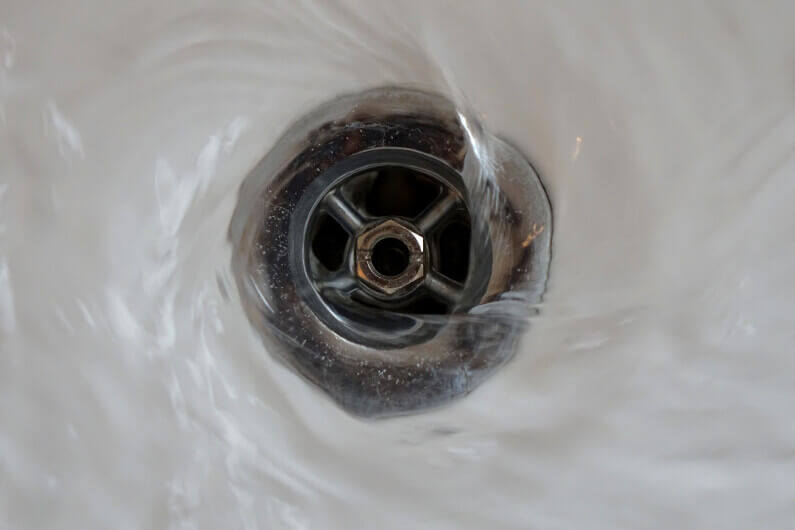Suburban Plumbing Blog
Plumbing Articles from Orange County, CA.
How to Replace a Drain in the Bathroom Sink

Do you think you’re due to replace drain systems in your home?
A sink is one of the essential features that your bathroom should have. It plays a vital role in helping you wash your face and brushing your teeth. Once your sink drain gets old, it can get rusty and give out a bad smell.
You should clean your drain at least once a year. If you’ve avoided cleaning your drain, you could encounter troubles with clogs. So, here’s a guide to help you know which drain is best for your sink and how to replace drains.
Buy the Right Drain For Your Sink
Before replacing your drain, you need to inspect the size of the sink. Make sure to measure the opening or take a look at the manufacturer’s instructions for the drain size. If you get the wrong size, you may end up with clogged drains, or the drain falls into the drain lines.
Getting a drain with a different finish usually works well to add an accent to the sink. Brass drains are the most popular sink drains since they’re pleasing to the eyes.
A bronze drain has a versatile finish, which makes an eye-catching combination. It blends with copper sinks and concrete sinks. A nickel drain gives a nice shine, while a chrome drain matches with modern bathrooms and sinks.
Types of Sink Drains
With the right type of sink drain, you can avoid common pitfalls. Some of the most common types of sink drains include:
Pop-Up Drain
Pop-up drains are great for sinks you use for washing your face and hands. They allow the overflow of water so you can fill your sink with water. This type of drain has two pieces: an inner plug unit with a long arm and the outer drain sleeve.
The arm connects to the drain plug, which allows you to pull it up or down. When you pull the plug upwards, the drain hole gets sealed, making it easier to fill your sink with water. Pop-up drains are the easiest to repair since it only takes 10 minutes of your time and only needs a pair of pliers. When you need to replace drain this is a good option.
Plugless Grid Drain
Grid drains are ideal for vessel sinks, which are traditional bowl-like sinks. A grid has a grated surface composed of metal sheets with holes. This type of drain stops small objects from falling and clogging up your drain lines.
Grid drains need more maintenance, but they have a higher chance of reducing clogs. It’s best to install grid drains in restaurant bathrooms and lavatories.
Lift & Turn Drain
Lift & turn drains are the most versatile since you can use them for most sinks. This includes drop-in, under-mount, and vessel sinks. The lift & turn drain work by lifting and turning the knob to let the water drain.
You can close it by lowering the cover and turning it. Doing this prevents water and anything else from entering the drain. This is useful in preventing oil spills from going into the drain.
Lift & turn drains are easy to install and remove using only a flat-head screwdriver.
Chain and Plug Drain
As the name states, the drain has a chain connected to the faucet. It allows you to pull on it to let the water drain. This type of drain usually has a basket strainer letting your sink catch small objects.
How to Replace Drains
We have a few steps to help you replace drains with ease.
Remove the P-Trap
Start by loosening the nut holding the mouth of the P-trap to its tailpiece. Then unscrew the other one holding the arm and adapter of the trap. It’s easy to remove by hand, but you can use tongue and groove pliers to help you.
Lower the trap’s mouth and pull the trap arm away from the adapter. Invert the trap and clean out the gunk if you plan to re-use it. If your P-Trap has a big crack or it’s too rusty, you can buy another at a plumbing hardware store.
Remove the Tailpiece and Strainer
To unscrew the tailpiece, you need to grip it with pliers and turn counterclockwise to loosen it. Next, you unscrew the strainer locknut by using pliers. Be sure to scrape off the plumber’s putty from the drain and clean it with soap and water.
Place the Strainer for the New Drain
Apply some putty around the opening of the drain and place the strainer onto the opening. Slip a rubber gasket underneath the sink and screw it on the locknut. You should tighten the nut by hand and use pliers to tighten it as much as possible.
Screw Back the Tailpiece
Return the tailpiece on the strainer and tighten it with your hands. Make sure that the opening for the stopper faces the back wall.
Connect the Drain Assembly
Place the lift rod in the hole at the back of the faucet. Then connect the clevis and make sure to tighten the connection screw. If you have a stopper, place it onto the strainer and put the pivot rod in the tailpiece’s hole.
Test the stopper by operating the pivot rod, then tighten the pivot rod’s nut onto the tailpiece. Drop the other end of the pivot rod into the cleves’ hole and slip it through the spring clip to hold it.
Reconnect the P-Trap
Make sure to replace the gaskets on your tailpiece and add new trap arms. Slip the arm on the adapter and inlet, then tighten the compression nuts. Ensure that the trap arm has a bit of a downward slope.
Check for any Leaks
Once you’ve installed everything, flash a right at the pipes and turn the water on. Grab a paper towel and hold it onto the pipes to know if there is a leak. If there’s a leak, you should tighten the locknuts until you can no longer turn them.
Replace Drain Systems For Your Sink Today
You no longer have to tolerate having a clogged sink in your home. Replace drain systems today and keep the water flowing now!
Do you need help with any plumbing issues in your house? Contact us here, and we’ll get in touch with you as soon as we can!
Request a Quote Now
suburban plumbing
Full Service Plumbing Orange County, CA.
Suburban Plumbing
14933 Adams Street
Midway City, CA 92655
(714) 922-3555
or Send Us an Email Here.
© 2017-2025 SuburbanPlumbingOC.com
– All rights reserved. –
Information on this website may not be re-used without prior written consent from Suburban Plumbing.
QUICK LINKS
HOME | PLUMBING SERVICES | PLUMBER NEAR ME | REVIEWS | ABOUT | COVID SAFETY | BLOG | COUPONS | CONTACT | SITE MAP
HOURS & LICENSE INFO
Monday-Friday: 8:00am to 7:00pm
Saturday: 8:00am to 5:00pm
Sunday: Closed Normal Appointments
Emergency Client Service Available
California Licensed, Bonded, Insured
C36 Plumbing Contractors License 833520





0 Comments